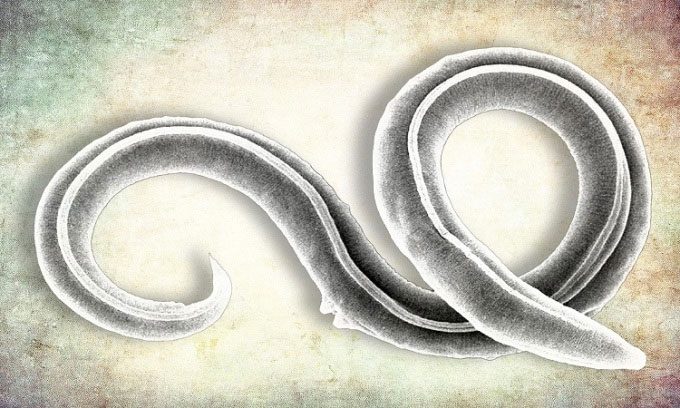An ancient roundworm species awakens after tens of thousands of years of dormancy in a fossilized ground squirrel burrow from the late Pleistocene.
A small roundworm has survived 46,000 years buried in permafrost in Siberia, significantly longer than previous reanimated worm species. It belongs to the newly described species Panagrolaimus kolymaensis. The research team discovered it curled up in a fossilized ground squirrel burrow taken from permafrost near the Kolyma River in northeastern Siberia in 2002. Scientists previously revived a frozen roundworm in 2018, but its age and species were unclear.

Ancient roundworm revived from permafrost in Siberia. (Photo: Times)
The study published on July 27 in the journal PLOS Genetics provides answers to these questions. “Surviving in extreme environments for such a long time is a challenge that only a few organisms can overcome,” the research team from Russia and Germany stated. “Here, we demonstrate that the species Panagrolaimus kolymaensis can remain inactive for 46,000 years under the permafrost in Siberia.”
Organisms like roundworms and tardigrades can enter a dormant state, a metabolic process called “cryptobiosis” (dormancy), to cope with freezing or complete dehydration. In both cases, they reduce oxygen consumption and the heat generated from metabolism to undetectable levels.
The new roundworm species went dormant during the late Pleistocene (2.6 million to 11,700 years ago), a period that includes the last ice age. The permafrost has preserved these organisms without thawing since then. This is the longest dormancy period recorded in roundworms. Previously, the Antarctic roundworm species Plectus murrayi was frozen in moss, and a Tylenchus polyhypnus specimen was desiccated in a plant sample for 25.5 and 39 years, respectively.
Researchers analyzed the genes of P. kolymaensis and compared them with Caenorhabditis elegans, the first multicellular organism to have its entire genome sequenced. C. elegans provides an excellent model for comparison. The analysis revealed several shared genes related to dormancy.
To understand precisely how the roundworm survived for such an extended period, the research team took a group of P. kolymaensis and C. elegans and dehydrated them in the laboratory. As the worms entered a desiccated state, they observed a spike in trehalose levels, which may help protect the roundworm’s cell membranes from dehydration. They then froze the worms at -80 degrees Celsius and found that the dehydration improved the survival rates of both species. Worms frozen at this temperature without prior dehydration would die immediately.
Equipped with molecular mechanisms to withstand Arctic conditions, roundworms have evolved to survive in a dormant state for thousands of years. These ancient roundworm species can revive if they escape the permafrost. Significant changes in the environment, including temperature fluctuations and natural radiation activity, could awaken the roundworms from their deep sleep.
- “Reviving” a 42,000-year-old worm: Is Russia bringing disaster to humanity?
- After waking from 24,000 years of dormancy in permafrost, ancient microorganisms immediately reproduce
- The US has just destroyed M55 missiles containing the nerve agent Sarin: Closing the chapter on the nightmare of chemical weapons


















































